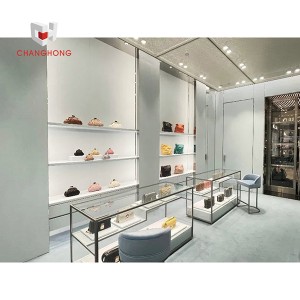Aug . 19, 2024 05:47 Back to list
Innovative Retail Shelving Solutions for Enhanced Merchandise Display and Customer Engagement
Retail Shelving Solutions Optimizing Store Layout for Success
In the competitive landscape of retail, the presentation of merchandise can significantly influence customer behavior and ultimately determine the success of a business. Retail shelving solutions play a pivotal role in this aspect, providing an organized and appealing way to display products. By understanding the various types of shelving and their strategic benefits, retailers can enhance the shopping experience, improve product visibility, and boost sales.
One of the primary considerations in retail shelving is the type of shelving unit used. Common varieties include wall-mounted shelves, freestanding displays, gondola shelving, and end-cap displays. Wall-mounted shelves are ideal for saving floor space, making them suitable for smaller stores or areas where maximizing square footage is critical. Freestanding displays, on the other hand, can serve as focal points within the store, drawing attention to promotional items or seasonal products. Gondola shelving is versatile and offers adjustable shelves that can be repositioned to accommodate various product sizes, effectively catering to changes in inventory or display strategies.
The design and layout of shelving units can significantly impact customer flow and engagement. Stores should aim to create a seamless shopping experience by designing layouts that encourage exploration. For instance, placing high-demand items at the back of the store creates a natural flow that leads customers past other products, increasing the likelihood of impulse purchases. End-cap displays, located at the ends of aisles, are excellent for showcasing new arrivals or special promotions and can capture the attention of shoppers as they navigate through the store.
retail shelving solutions

In addition to the type of shelving and layout, visual merchandising is a crucial aspect of retail shelving solutions. Utilizing colors, signage, and lighting effectively can enhance product visibility and attract customers. Clear, bold signage can guide shoppers and highlight key promotions. Furthermore, well-placed lighting can illuminate displays, making products more appealing and easier to see. Retailers should also consider the height of shelves and the placement of products, ensuring that top-shelf items are still accessible and that high-margin products are positioned at eye level.
Technology is also playing an increasingly important role in retail shelving solutions. Smart shelving options equipped with RFID technology or digital price tags can streamline inventory management, allowing for real-time tracking of stock levels. This automation minimizes out-of-stock scenarios, increasing customer satisfaction and maintaining sales momentum. Interactive displays that incorporate touchscreens or QR codes can engage customers, offering additional product information or allowing them to order items not available in-store.
Finally, sustainability should not be overlooked when selecting retail shelving solutions. Consumers are becoming more environmentally conscious, and retailers can respond by opting for display units made from recycled materials or investing in energy-efficient lighting options. Implementing sustainable practices not only appeals to eco-conscious shoppers but also enhances a brand’s reputation.
In conclusion, effective retail shelving solutions are essential for optimizing store layout and enhancing the customer experience. By selecting the right type of shelving, designing an engaging layout, utilizing visual merchandising techniques, embracing technology, and prioritizing sustainability, retailers can create a shopping environment that not only meets but exceeds customer expectations. In an era where first impressions matter, investing in quality shelving solutions can lead to increased foot traffic, higher conversion rates, and ultimately, greater business success.
-
The Benefits of Electronic Shelf Labels for Modern Stores
NewsJul.01,2025
-
Space-Saving Retail Store Furniture Designs for Small Shops
NewsJul.01,2025
-
Slatwall vs. Gridwall: Which Store Fixture is Right for Your Business?
NewsJul.01,2025
-
Shop Fittings: Essential Elements for a Functional Retail Space
NewsJul.01,2025
-
How to Design a Minimalist Cosmetic Shop Display
NewsJul.01,2025
-
Creative Clothes Shop Display Ideas to Attract More Customers
NewsJul.01,2025


















































































































